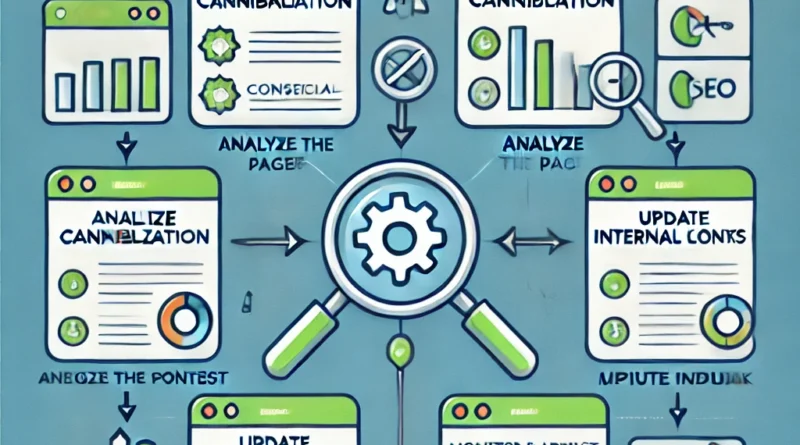How to Fix Keyword Cannibalization: Effective Strategies, Solutions
Keyword cannibalization occurs when multiple pages on your website target the same or similar keywords, leading to competition within your own content. This can confuse search engines, dilute your ranking potential, and result in lower search engine performance. Fixing keyword cannibalization is crucial for improving your site’s SEO and ensuring that each piece of content serves its intended purpose. In this guide, we’ll explore the steps to identify and resolve keyword cannibalization.
Step 1: Identify Keyword Cannibalization
The first step in fixing keyword cannibalization is identifying which pages are competing for the same keywords. Here’s how you can do it:
- Conduct a Site Search: Use the
site:yourdomain.com "keyword"search operator in Google to see which pages rank for the same keyword. - SEO Tools: Tools like Ahrefs, SEMrush, or Google Search Console can help identify competing pages by analyzing your site’s keyword rankings.
- Manual Audit: Review your content manually to see if multiple pages cover the same topic or keywords.
Step 2: Analyze the Pages
Once you’ve identified the pages that are competing for the same keywords, analyze them to determine the best course of action. Consider the following:
- Content Quality: Which page provides more value to the user? Which page is more comprehensive or up-to-date?
- Backlinks: Which page has more backlinks? A page with more backlinks may be worth keeping as the primary content.
- Traffic and Engagement: Review the traffic and engagement metrics for each page. Which page is performing better?
Step 3: Merge or Consolidate Content
If you have multiple pages targeting the same keyword, consider merging or consolidating the content into a single, comprehensive page. Here’s how:
- Choose the Best Page: Based on your analysis, choose the page that performs best or has the most potential.
- Redirect Other Pages: Use 301 redirects to point other pages to the chosen page. This preserves the link equity and ensures users are directed to the correct content.
- Update the Content: Enhance the chosen page by incorporating relevant information from the other pages. Make sure it’s well-organized and user-friendly.
Step 4: Update Internal Links
After merging or consolidating content, update your internal linking structure. Ensure that all internal links point to the chosen page rather than the pages you’ve redirected or removed. This helps search engines understand the importance of the page and improves its ranking potential.
Step 5: Monitor and Adjust
Keyword cannibalization isn’t a one-time fix; it requires ongoing monitoring. Use SEO tools to track the performance of your chosen page and ensure that it ranks well for the targeted keyword. Make adjustments as needed to maintain optimal SEO performance.
Conclusion
Fixing keyword cannibalization is essential for improving your website’s SEO and ensuring that each page has a clear, distinct purpose. By following the steps outlined in this guide, you can effectively address cannibalization issues, enhance your search engine rankings, and provide a better user experience.




